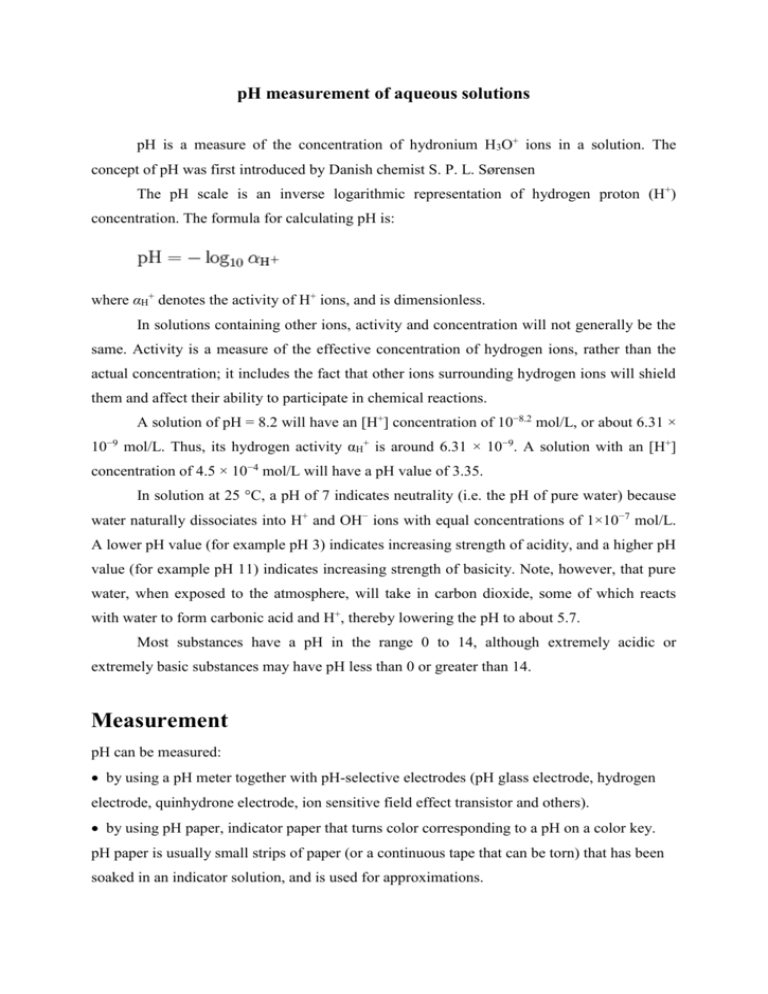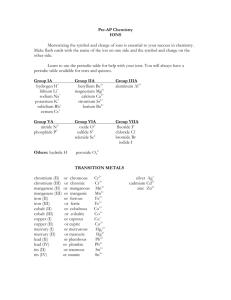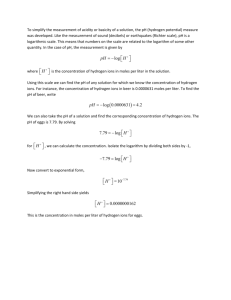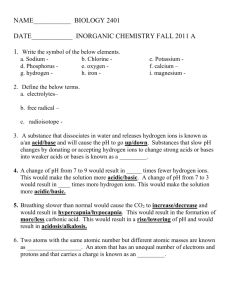Measurement
advertisement

pH measurement of aqueous solutions pH is a measure of the concentration of hydronium H3O+ ions in a solution. The concept of pH was first introduced by Danish chemist S. P. L. Sørensen The pH scale is an inverse logarithmic representation of hydrogen proton (H+) concentration. The formula for calculating pH is: where αH+ denotes the activity of H+ ions, and is dimensionless. In solutions containing other ions, activity and concentration will not generally be the same. Activity is a measure of the effective concentration of hydrogen ions, rather than the actual concentration; it includes the fact that other ions surrounding hydrogen ions will shield them and affect their ability to participate in chemical reactions. A solution of pH = 8.2 will have an [H+] concentration of 10−8.2 mol/L, or about 6.31 × 10−9 mol/L. Thus, its hydrogen activity αH+ is around 6.31 × 10−9. A solution with an [H+] concentration of 4.5 × 10−4 mol/L will have a pH value of 3.35. In solution at 25 °C, a pH of 7 indicates neutrality (i.e. the pH of pure water) because water naturally dissociates into H+ and OH− ions with equal concentrations of 1×10−7 mol/L. A lower pH value (for example pH 3) indicates increasing strength of acidity, and a higher pH value (for example pH 11) indicates increasing strength of basicity. Note, however, that pure water, when exposed to the atmosphere, will take in carbon dioxide, some of which reacts with water to form carbonic acid and H+, thereby lowering the pH to about 5.7. Most substances have a pH in the range 0 to 14, although extremely acidic or extremely basic substances may have pH less than 0 or greater than 14. Measurement pH can be measured: by using a pH meter together with pH-selective electrodes (pH glass electrode, hydrogen electrode, quinhydrone electrode, ion sensitive field effect transistor and others). by using pH paper, indicator paper that turns color corresponding to a pH on a color key. pH paper is usually small strips of paper (or a continuous tape that can be torn) that has been soaked in an indicator solution, and is used for approximations. Calculation of pH for weak and strong acids Dissolving the strong acid HCl in water can be expressed as: HCl(aq) → H+ + Cl− This means that in a 0.01 mol/L solution of HCl it is approximated that there is a concentration of 0.01 mol/L dissolved hydrogen ions. From above, the pH is: pH = −log10 [H+]: pH = −log (0.01) = 2. For weak acids, the dissociation reaction does not go to completion. An equilibrium is reached between the hydrogen ions and the conjugate base. The following shows the equilibrium reaction between methanoic acid and its ions: HCOOH(aq) ↔ H+ + HCOO− It is necessary to know the value of the equilibrium constant of the reaction for each acid in order to calculate its pH. In the context of pH, this is termed the acidity constant of the acid but is worked out in the same way (see chemical equilibrium): Ka = [H+][A-] / [HA] for HCOOH, Ka = 1.6 × 10−4 When calculating the pH of a weak acid, it is usually assumed that the water does not provide any hydrogen ions. This simplifies the calculation, and the concentration provided by water, 1×10−7 mol/L, is usually insignificant. With a 0.1 mol/L solution of methanoic acid (HCOOH), the acidity constant is equal to: Ka = [H+][HCOO−] / [HCOOH] Given that an unknown amount of the acid has dissociated, [HCOOH] will be reduced by this amount, while [H+] and [HCOO−] will each be increased by this amount. Therefore, [HCOOH] may be replaced by 0.1 − x, and [H+] and [HCOO−] may each be replaced by x, giving us the following equation: Solving this for x yields 3.9×10−3, which is the concentration of hydrogen ions after dissociation. Therefore the pH is −log(3.9×10−3), or about 2.4








